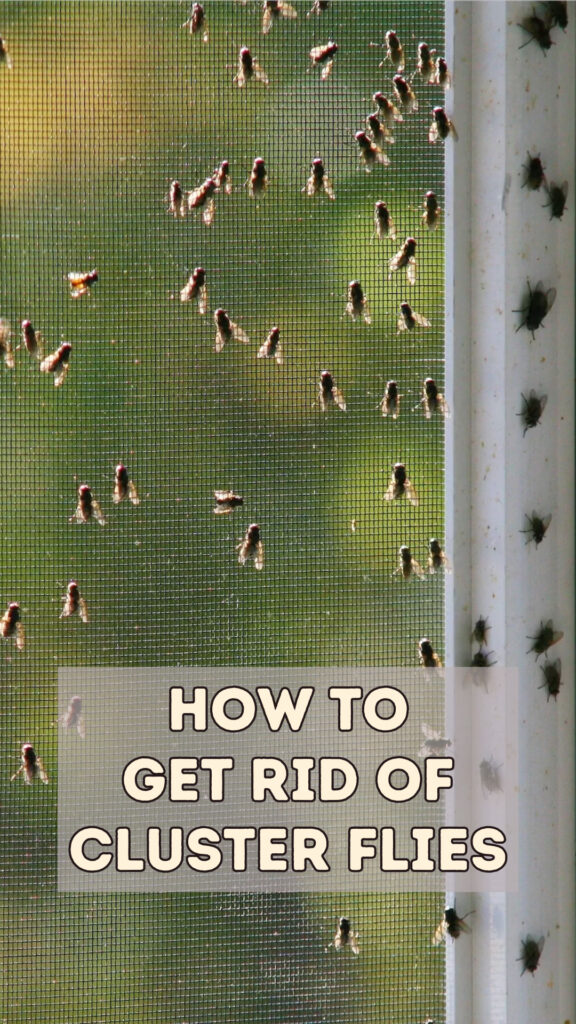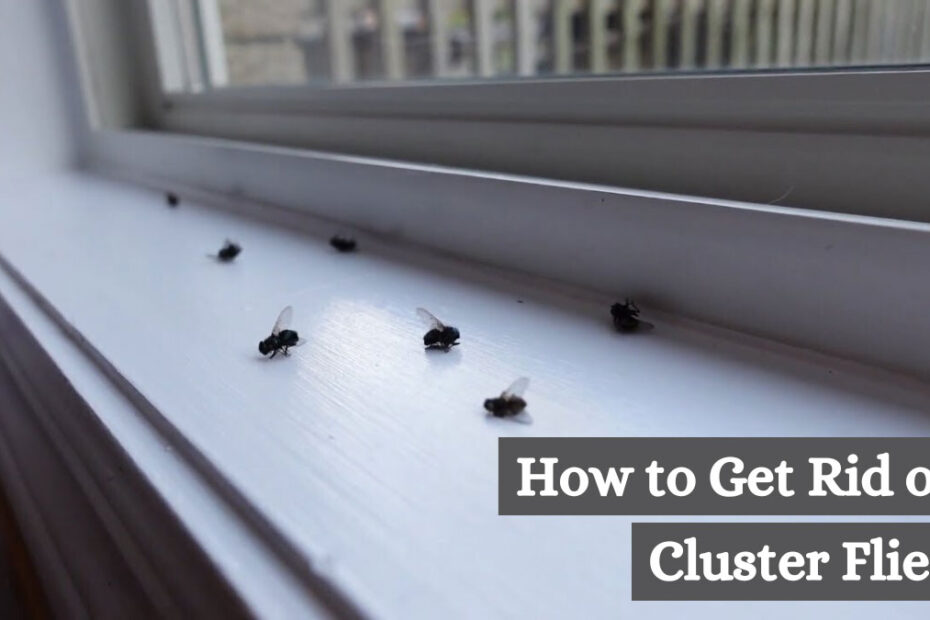Cluster flies invading your home can be more than just a nuisance; they can disrupt your peace and comfort. Unlike common houseflies, cluster flies are known for their habit of gathering in large numbers, especially during the colder months when they seek warmth indoors. If you’re tired of swatting at these persistent pests, it’s time to take action.
Understanding how to effectively get rid of cluster flies involves a mix of prevention and targeted treatments. You don’t need to be an expert to reclaim your space. With a few strategic steps, you can banish these unwelcome guests and keep them from returning. Ready to take control? Let’s jump into the most effective methods to get rid of cluster flies for good.
Key Takeaways
- Understand Cluster Flies: Cluster flies typically invade homes during colder months seeking warmth, often gathering in attics, wall voids, and unused rooms.
- Identify Entry Points: Seal gaps around windows, doors, and cracks in walls to prevent cluster flies from gaining access to your home.
- Improve Ventilation: Proper ventilation and insulation in attics and basements help reduce the appeal of your home to cluster flies.
- Utilize Natural Remedies: Essential oils, vinegar traps, and sticky traps can effectively manage cluster fly populations without chemicals.
- Apply Chemical Treatments: Residual insecticides, aerosol sprays, and insecticide dust can be used to tackle more severe infestations.
- Long-Term Maintenance: Regular property inspections, repairs, and cleanliness, along with seasonal preparations, ensure a fly-free home year-round.

Understanding Cluster Flies
Cluster flies often invade homes in colder months, seeking warmth. To deal with them effectively, you need to understand their nature, life cycle, and the problems they cause.
What Are Cluster Flies?
Cluster flies (Pollenia rudis) resemble houseflies but differ significantly. They:
- Measure around 8-10 millimeters in length.
- Have golden-yellow hairs on their thorax.
- Often group together in large numbers.
Cluster flies enter homes searching for warm places. They’re known for gathering in attics, wall voids, and unused rooms.
Life Cycle of Cluster Flies
Understanding the life cycle helps in targeting cluster flies at different stages. Their life cycle includes:
- Egg Stage: Females lay eggs in soil. Eggs hatch in 3-7 days.
- Larval Stage: Larvae feed on earthworms. This stage lasts up to 22 days.
- Pupal Stage: Pupation happens in soil, taking approximately 11-14 days.
- Adult Stage: Adult flies emerge and seek shelter as temperatures drop.
Cluster flies usually have two generations per year.
Why Are They a Problem?
Cluster flies pose several issues, which make them more than just a nuisance:
- Home Invasion: They enter homes in large numbers, often congregating in attics and wall voids.
- Annoyance Factor: Their clustering makes them bothersome, disrupting your peace.
- Potential Damage: Though they don’t bite, their presence can lead to secondary infestations from other pests attracted to decaying flies.
Addressing these aspects effectively prevents the disruption caused by cluster flies.
Preventing Cluster Flies
Effective prevention keeps cluster flies from invading your home. This strategy involves several methods focused on blocking entry points, improving ventilation, and conducting regular inspections.
Sealing Entry Points
Seal entry points to deny cluster flies access to your home. Inspect and secure areas where flies can enter:
- Windows: Use weather stripping to seal gaps. Ensure window screens are intact and fit snugly without tears or holes.
- Doors: Install door sweeps and ensure doors close tightly. Weather stripping around the door frame helps eliminate gaps.
- Cracks and Crevices: Seal cracks in walls, foundations, and around utility pipes with caulk. Pay attention to spaces around vents and chimneys.
- Attic and Roof: Inspect for gaps around roof eaves and attic vents. Use fine mesh to cover these openings.
Proper Ventilation and Insulation
Improving ventilation and insulation helps create environments less attractive to cluster flies:
- Attics and Basements: Ensure proper airflow to reduce humidity. Install vents and use fans where necessary to maintain air circulation.
- Insulation: Keep insulation in good condition to prevent temperature fluctuations that attract cluster flies. Insulate attic spaces and walls adequately.
- Windows and Doors: Double-glazed windows and well-insulated doors can minimize temperature variations, reducing the internal appeal to cluster flies.
Regular Inspections
Regular inspections identify potential issues before they become problematic. Conduct thorough checks during different seasons:
- Spring and Fall: Inspect for signs of cluster flies during these transitional periods. Look for flies congregating in warm areas like attics and sun-facing walls.
- Maintenance Schedule: Establish a maintenance routine for checking and sealing entry points, replacing weather stripping, and ensuring proper insulation.
- Monitoring: Use fly traps or sticky tapes in areas where flies are commonly found. This helps monitor their presence and effectiveness of preventive measures.
By sealing entry points, improving ventilation and insulation, and conducting regular inspections, you’ll reduce the likelihood of cluster fly invasions.
Effective Methods to Get Rid of Cluster Flies
Addressing a cluster fly infestation requires a combination of natural and chemical methods. You can also seek professional pest control services if necessary.
Natural Remedies
For those seeking less invasive approaches, several natural remedies can help manage cluster fly populations:
- Essential Oils: Oils like lavender, eucalyptus, and peppermint can deter flies. Use a mixture of water and a few drops of essential oil in a spray bottle and apply to potential entry points.
- Vinegar Traps: Create a simple trap using a bowl filled with apple cider vinegar and a few drops of dish soap. Flies are attracted to the scent of vinegar and get trapped.
- Sticky Traps: Place sticky traps near windows and other infested areas to capture flies. These traps are non-toxic and a simple solution.
- Sealing Entry Points: Ensure all cracks, crevices, and openings around windows, doors, and other potential entry points are sealed with caulk or weather stripping.
Chemical Treatments
When natural methods are insufficient, chemical treatments can provide an effective solution:
- Residual Insecticides: Apply products containing synthetic pyrethroids around entry points and infested areas. These insecticides remain effective for weeks.
- Aerosol Sprays: Use pyrethrin-based aerosols to quickly knock down flies. Aerosols are ideal for targeting specific areas where flies gather.
- Insecticide Dust: Apply insecticide dust into wall voids and attic spaces where cluster flies may hide. Dust products can reach areas sprays might miss.
Professional Pest Control
If infestations persist even though attempts with natural and chemical methods, professional pest control services can offer specialized solutions:
- Integrated Pest Management (IPM): Professionals use IPM strategies combining inspection, sanitation, and various control methods tailored to your situation.
- Fogging Treatments: Professionals may use fogging machines that disperse insecticides throughout large areas, effectively reaching hidden spaces where cluster flies might reside.
- Ongoing Monitoring: Pest control companies often provide ongoing monitoring services to ensure cluster fly populations remain under control over time.
By utilizing these methods, you can regain control of your space and mitigate the nuisance caused by cluster flies.
Long-term Solutions
To ensure cluster flies don’t become a recurring issue, consider implementing long-term solutions. Focus on preventive measures and ongoing maintenance to maintain a fly-free environment.
Maintenance Tips
Regular maintenance is vital for preventing cluster fly invasions.
- Inspect property regularly: Check windows, doors, and attic spaces for potential entry points.
- Repair cracks and gaps: Use sealant to close openings in walls, windows, and doors.
- Maintain screens: Ensure window and door screens are intact and fitting well.
- Clear vegetation: Remove or trim plants near the house that might house flies.
- Clean regularly: Keep living spaces and attics clean and clutter-free to reduce hiding spots.
Seasonal Considerations
Seasonal changes significantly impact cluster fly activity.
- Spring: Inspect and repair any damage to exterior walls and screens caused during winter.
- Summer: Maintain cleanliness and keep vegetation in check.
- Fall: Focus on sealing entry points, as flies seek warmth during colder months.
- Winter: Monitor indoor spaces and use traps or insecticides to capture flies that made it inside.
Maintaining vigilance throughout the year helps prevent cluster flies from becoming a problem again.
Conclusion
Dealing with cluster flies can be frustrating, but with the right strategies, you can effectively manage and prevent their invasions. By sealing entry points, maintaining proper ventilation, and conducting regular inspections, you’ll create an environment that’s less attractive to these pests. Utilizing a combination of natural and chemical treatments can help eliminate existing infestations, while professional pest control services offer long-term solutions for persistent problems.
Remember, ongoing maintenance and seasonal vigilance are key to keeping cluster flies at bay. Regularly inspect your property, repair any cracks or gaps, and keep your living spaces clean to ensure these unwelcome guests don’t return. By taking proactive measures, you can enjoy a fly-free home year-round.
Frequently Asked Questions
What are cluster flies?
Cluster flies (Pollenia rudis) are large flies resembling houseflies, with golden-yellow hairs and measuring 8-10 millimeters. They often gather in groups, particularly during colder months, seeking warmth.
How do cluster flies differ from houseflies?
Cluster flies are slightly larger than houseflies and have distinct golden-yellow hairs. They move slower and are less of a health threat compared to houseflies, which can carry diseases.
Why are cluster flies invading my home?
Cluster flies enter homes seeking warmth as temperatures drop. They can enter through small cracks, windows, and vents, gathering in large numbers inside attic spaces and walls.
How can I prevent cluster flies from entering my home?
To prevent cluster flies, seal all entry points such as windows, doors, and cracks. Ensure proper ventilation and insulation, and conduct regular inspections during spring and fall to identify and address any vulnerabilities.
What natural remedies can I use to get rid of cluster flies?
Natural remedies include using essential oils, setting up vinegar traps, and employing sticky traps. Additionally, sealing entry points can help prevent future invasions.
When should I consider chemical treatments for cluster fly infestations?
Chemical treatments should be considered if natural remedies are insufficient. Options include residual insecticides, aerosol sprays, and insecticide dusts. For severe infestations, professional pest control might be necessary.
How do professionals handle persistent cluster fly infestations?
Professionals use Integrated Pest Management (IPM) strategies, fogging treatments, and continuous monitoring to manage severe cluster fly infestations effectively.
What long-term solutions are effective against cluster flies?
Long-term solutions include regular property inspections, repairing cracks, maintaining screens, clearing vegetation, and keeping living spaces clean. Seasonal maintenance is crucial to prevent future infestations.
When is the best time to inspect for cluster flies?
The best times for inspections are during transitional seasons, particularly spring and fall, when cluster flies are most likely to search for entry points into your home.
Are cluster flies harmful to humans?
Cluster flies are primarily a nuisance and do not pose significant health risks to humans. However, dead flies can attract other pests, potentially causing additional problems.
